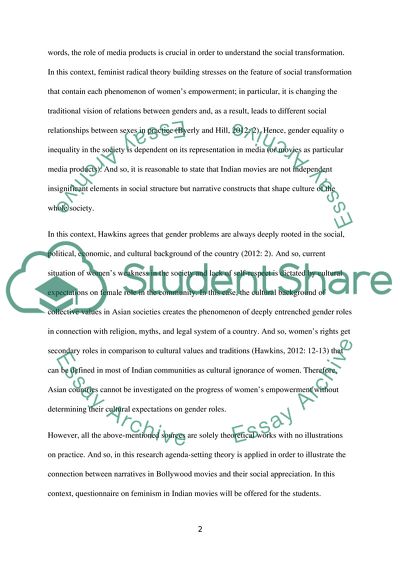Cite this document
(How Is Women's Empowerment Represented in Bollywood Films Literature review Example | Topics and Well Written Essays - 3000 words, n.d.)
How Is Women's Empowerment Represented in Bollywood Films Literature review Example | Topics and Well Written Essays - 3000 words. https://studentshare.org/gender-sexual-studies/1836348-how-is-womens-empowerment-represented-in-bollywood-films
How Is Women's Empowerment Represented in Bollywood Films Literature review Example | Topics and Well Written Essays - 3000 words. https://studentshare.org/gender-sexual-studies/1836348-how-is-womens-empowerment-represented-in-bollywood-films
(How Is Women'S Empowerment Represented in Bollywood Films Literature Review Example | Topics and Well Written Essays - 3000 Words)
How Is Women'S Empowerment Represented in Bollywood Films Literature Review Example | Topics and Well Written Essays - 3000 Words. https://studentshare.org/gender-sexual-studies/1836348-how-is-womens-empowerment-represented-in-bollywood-films.
How Is Women'S Empowerment Represented in Bollywood Films Literature Review Example | Topics and Well Written Essays - 3000 Words. https://studentshare.org/gender-sexual-studies/1836348-how-is-womens-empowerment-represented-in-bollywood-films.
“How Is Women'S Empowerment Represented in Bollywood Films Literature Review Example | Topics and Well Written Essays - 3000 Words”. https://studentshare.org/gender-sexual-studies/1836348-how-is-womens-empowerment-represented-in-bollywood-films.


